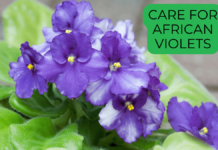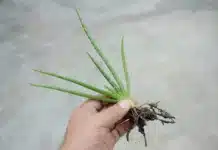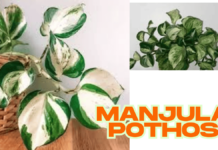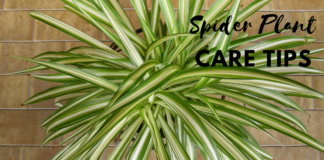Introduction
Black Diamond watermelon is a showstopper in any garden or summer table.This heirloom Citrullus lanatus variety has a reputation for enormous size and exceptional flavor. In fact, seed suppliers and gardeners alike describe Black Diamond melons as “known for their enormous size and juicy, sweet flesh”, often reaching 30–50 pounds (some even up to 75–80 pounds under ideal conditions). Its glossy, deep black-green rind and crisp scarlet interior make it visually striking and delicious.
Whether you’re an experienced gardener or a curious beginner, giving Black Diamond watermelon a spot in your garden will surely be a highlight of the growing season. I encourage you to try it – and enjoy the fruits of this dark gem of a melon.
History and Origin of Black Diamond Watermelon
The name “Black Diamond watermelons” reflects its appearance: a glossy, almost jet-black rind that stands out among more familiar striped watermelons. It’s also sometimes called Texas Black Diamond, Midnight, Obsidian, or Onyx watermelon, among others. These alternative names hint at its deep color and showy look. Because it’s an open-pollinated heirloom variety, gardeners can save seeds from year to year, perpetuating the genetic lineage.
Characteristics of Black Diamond Watermelon
Appearance: Rind, Shape, and Size
Physically, Black Diamond watermelons are imposing. The fruit is large and slightly oblong, often 30–50 pounds each (and with careful pruning/space even reaching up to 75–80 pounds). The rind is uniquely dark: a glossy solid black-green exterior that lacks the normal striping of other melons. Look closely, and you might see subtle dark markings or spotty patches, but overall the melon appears almost black in certain light.
To put its size in perspective, wild watermelons typically only reach about 8 inches across, whereas cultivated varieties like Black Diamond can easily exceed 24 inches in diameter when fully grown. One sprouted vine I grew spanned nearly 15 feet, with multiple fruits lying side by side. It truly earns its nickname as a “giant watermelon” in every sense.
Flavor and Texture
The flavor of Black Diamond watermelon lives up to its looks. It is intensely sweet with classic watermelon character, complemented by a subtle tangy note that keeps it from being cloying. The crispness of the flesh makes each bite refreshing and satisfying. When chilled on a hot day, its sweetness and high water content make for an incredibly quenching treat – far superior to the typical grocery melon in my opinion.
Nutrition-wise, it’s also a healthful snack. Like other watermelons, Black Diamond is packed with vitamins A and C, folate, potassium, and antioxidants. In fact, it’s considered an excellent source of vitamin A (from beta-carotene), vitamin C, and lycopene. Lycopene is linked to reduced risk of certain cancers and heart disease. The fruit is mostly water (around 90%), which means it’s low in calories and a great hydrating food. Plus it offers a bit of dietary fiber. So beyond being delicious, Black Diamond watermelon provides real nutritional benefits, making it a smart summer food choice.
Plant and Flower Characteristics
Black Diamond is an annual vine in the gourd family (Cucurbitaceae). The plant behaves like other watermelon vines: long, sprawling vines that can reach 10–20 feet in length. The vines have large, lobed green leaves and curling tendrils that help the plant grip as it spreads. In summer it produces single-sex flowers (yellow male and female blooms on the same plant), which must be pollinated (usually by bees) for fruit to set.
Under ideal conditions, a single Black Diamond plant will produce several melons. The vines are relatively sturdy and the plant can support multiple melons up to full size, as long as you water and fertilize adequately. Spruce notes these vines can grow up to 20 feet long if not pruned, which means you’ll need to allot plenty of room in the garden for them to roam.
Varietal Status: Heirloom and Genetics
Botanically, Black Diamond is a cultivar of the species Citrullus lanatus – the same species as all common watermelons. Within the species, it is classified as an open-pollinated, heirloom variety. “Open-pollinated” means that pollination occurs naturally (by insects, wind, etc.) and that if you save seed from one year’s crop (assuming it wasn’t cross-pollinated with a different cultivar), the next generation will reliably produce the same type of watermelon. This is distinct from hybrid varieties, which may not breed true from seed.
Planting Black Diamond Watermelons
A successful watermelon crop starts with good timing and site selection. Black Diamonds require warm weather and a long growing season (roughly 90 days to maturity). In cooler climates or shorter summers, gardeners often start seeds indoors or use season-extending techniques.
Preparing the Site and Soil
First, pick a sunny, sheltered location. Like all watermelons, Black Diamond plants need full sun (at least 6–8 hours of direct sun daily) and warm soil. The soil should be well-draining but rich in organic matter. A sandy-loam or loamy soil is ideal, as it warms up quickly and doesn’t hold excess moisture. If your native soil is heavy clay or very sandy, work in plenty of compost or well-rotted manure ahead of planting to improve fertility and texture. Aim for a slightly acidic to neutral pH (around 6.0–6.8), which watermelons prefer.
Before planting, loosen the soil to about a foot deep. Mixing in a balanced vegetable fertilizer (such as 10-10-10 NPK) or compost at planting time will give young plants a nutrient boost. I also prepare “planting hills” – small mounds of soil several inches high – which warms the soil earlier in spring and helps drainage. On these hills, I sprinkle in compost and blend it with the topsoil.
When to Plant
Black Diamond is a warm-season crop. Do not plant outdoors until all danger of frost has passed and nighttime temperatures are reliably above 60°F (16°C). Soil temperature should be at least 70°F (21°C) for germination. In most of the USA, this means sowing seeds or setting transplants in late spring. If you have a short season (zone 5 or cooler), start seeds indoors 3–4 weeks before the last frost (in early spring) so you can transplant seedlings after frost. Indoor-started plants should be hardened off (acclimated to outdoor conditions) a week or two before transplanting.
In warmer zones, you can also direct-sow seeds outdoors in late spring once the soil warms up. To warm the ground faster, covering the soil with black plastic mulch a week before planting can help reach the needed temperature. Many gardeners report better germination when the soil is covered.
Planting Depth and Spacing
Plant Black Diamond watermelon seeds about ½ to 1 inch deep. Each hill can start with 3–4 seeds. If direct-seeding, many gardeners space hills 6–8 feet apart in rows (with rows also 6–8 feet apart) to give vines room. (Some guides suggest 8-foot spacing, while smaller home gardens sometimes do 6 feet; either way, generous spacing is crucial because these vines sprawl.) After seedlings emerge, thin each hill to the two healthiest plants per hill. Do this early by snipping extra seedlings at soil level so as not to disturb the roots of the ones you keep.
Table: Planting Guide for Black Diamond Watermelon
| Requirement | Details |
|---|---|
| Soil type & pH | Loamy, well-drained soil, rich in organic matter; pH ~6.0–6.8 |
| Sunlight | Full sun (6+ hours daily) |
| Planting time | Sow after last frost when soil ≥70°F (21°C); indoors 4 weeks before last frost if needed |
| Seeds per hill | 3–4 seeds (thin to 2 plants) |
| Planting depth | 0.5–1 inch (1.3–2.5 cm) |
| Spacing | Hills 6–8 ft (1.8–2.4 m) apart in all directions |
| Germination | 7–14 days under warm soil (70–95°F) |
| Days to maturity | ~90 days from planting (mid to late summer harvest) |
| Vine length | 10–15+ feet; give plenty of space |
This table summarizes the key planting requirements for Black Diamond watermelons. By following these guidelines and giving the plants room and warmth, you set the stage for bountiful, giant fruits.
Caring for Black Diamond Watermelon
Once planted, regular care will determine your success. Black Diamonds are moderately vigorous and tolerate heat, but they appreciate consistent moisture and nutrients throughout the season.
Watering Schedule
Watermelons have deep roots but benefit from steady moisture as fruits develop. Water deeply about 1–2 inches per week, depending on weather and soil type. In very hot, dry spells, you may need to water more frequently (especially in sandy soils). However, take care not to overwater once fruits begin to swell; too much water can dilute sweetness and risk splitting. Typically, taper off irrigation just as melons start ripening. I use soaker hoses or drip irrigation to water at the base and avoid wetting leaves, reducing disease risk.
Consistent watering is especially critical in the 3–4 weeks while fruits are sizing up. Mulching around the plants (with straw or grass clippings) helps conserve soil moisture and keeps weeds down. Just make sure mulch doesn’t smother the vines; leave some space around the stem.
Fertilization and Nutrition
As a heavy feeder, Black Diamond watermelon thrives with fertile soil. If you amended the soil at planting, that gives a good foundation. I side-dress or top-dress with a balanced organic fertilizer (e.g. composted manure or organic 10-10-10) when the vines begin to run vigorously (about 3–4 weeks after planting). Another round of fertilizer (or phosphorus/potassium-rich bloom booster) can be applied when the first fruits are golf-ball sized to support fruit development. Avoid over-applying nitrogen during fruiting stages, as that can lead to excessive vine growth at the expense of fruit sweetness.
Some gardeners do a simple regimen: one balanced feeding at planting and one feed of potassium/boron when fruits start to form. Others broadcast a fertilizer every 3-4 weeks. In general, watch your plants: if leaves become pale or undersized, a light feeding may help. Healthy plants should have deep green foliage.
Pest and Disease Management
Black Diamond, like all watermelons, can fall prey to certain pests and diseases if unchecked. Common insect pests include squash vine borers, cucumber beetles, and aphids. The vine borer can be devastating: it bores into the base of the stem and wilts the plant. Crop rotation (avoiding planting melons or other cucurbits in the same spot two years in a row) helps, as do row covers early in the season (before plants bloom) to block adult borers and beetles. Companion planting with flowers like marigolds can attract beneficial insects. If borers appear (plants suddenly wilt), you may try the classic cylinder of foil or deadheading around the base, or carefully slit the stem and remove the larvae.
Cucumber beetles feed on young plants and transmit bacterial wilt. Hand-pick beetles or use floating row cover early. If bacterial wilt is a problem, there are resistant varieties, though Black Diamond isn’t noted for resistance. Otherwise, its diseases are typical: powdery mildew and downy mildew can appear in humid conditions (watch for yellow spots, and remove affected leaves). Spraying with potassium bicarbonate or neem oil at first sign, and ensuring good air flow around vines, will help.
One study notes Black Diamond is susceptible to Fusarium wilt, so if you have a history of Fusarium in the soil, rotate crops or consider grafting onto resistant rootstock. In general, good sanitation (removing old vines and debris) and healthy soil go a long way to preventing disease.
Pollination
Each watermelon fruit starts from a female flower, which must be pollinated (usually by bees visiting male flowers). If your garden is hive-friendly or has plenty of bees, nature takes care of it. In my garden, I often notice the bees love the yellow blooms, and nearly every female flower turns into a developing melon. If pollination is sparse (too few bees), you can hand-pollinate: gently transfer pollen from male blooms (which have pollen-covered anthers) to a female bloom’s stigma using a small paintbrush or by nudging flowers together. I’ve done this on windy days just to ensure every bloom sets; it’s a quick and rewarding bit of garden work.
Harvesting and Storing Black Diamond Watermelon
When to Harvest
Timing is everything with watermelon. Black Diamonds are a late-season variety – typically taking about 90 days to mature. That means if you planted in late May, expect harvest in mid-to-late August (zone 7-9) or September. The exact date varies by climate, so watch the indicators:
- Tendrils: The clearest sign is the tendril (curly vine) nearest the melon. When it turns brown and dries up (instead of green), the melon is usually ripe. This drying tendril occurs at maturity.
- Ground Spot: Look under the melon where it contacts the soil. Early on this spot is whitish or pale green; as the fruit ripens, the ground spot typically turns buttery yellow.
- Thumping Test: Give the melon a gentle tap. A ripe watermelon often makes a deep, hollow sound, whereas an unripe one sounds duller.
- Rind Color: The glossy black-green rind may also lose some sheen and become matte when ripe.
In my experience, the tendril trick works best. I wait until at least 85 days after transplanting before closely testing any melon. Even then, I’ll harvest a couple early to test and see how sweet they are. Overripe, a melon can crack or ferment, so it’s better to err on the side of a day or two early than too late.
Harvesting Technique
When you decide it’s time, carefully cut the melon from the vine. Use a sharp knife or pruning shears, leaving a few inches of stem attached to the melon. This helps it stay fresh longer. Because Black Diamonds can be heavy, don’t risk breaking the vine by yanking fruit off. If very large, you might need an extra pair of hands to lift it out of the patch.
After harvesting, handle the fruits gently. Avoid dropping them or bruising the rind. Any nicks or cuts in the skin can allow rot to set in.
Storage and Preservation
Black Diamond watermelons are best eaten fresh, but you can store a whole melon at room temperature for about 7–10 days before it starts to decline. Cooler temperatures (50–60°F) extend that to 2–3 weeks. If your kitchen is warm, consider placing uncut melons on a cool concrete floor or even in a garage (if it’s not too warm). Once cut, wrap the pieces in plastic or keep them in a sealed container in the fridge, where they will last 3–5 days.
If you have more watermelon than you can eat quickly, slice the flesh into cubes and freeze them for smoothies or ice pops. The rind can be pickled or used in chutneys (some cultures pickle watermelon rind into a sweet-sour relish). Even the seeds have use: dry and roast them with salt for a crunchy snack (I sometimes mix them with pumpkin seeds).
Culinary Uses of Black Diamond Watermelon
Black Diamond is immensely versatile in the kitchen. Its sweet, juicy flesh can be enjoyed in countless ways:
- Fresh Slices: Of course, slicing it up and eating it fresh (chilled) is the simplest joy. The crisp, succulent cubes or wedges are perfect for a summer afternoon.
- Fruit Salads and Platters: The vibrant red flesh adds color and sweetness to fruit salads. I often pair watermelon chunks with feta cheese, mint, and a drizzle of balsamic – the sweet-tart combo is delicious.
- Drinks: Watermelon juice is refreshing on its own. Blend the flesh with a little lime juice for a natural lemonade; or mix with strawberries and mint for a flavored agua fresca. Watermelon cocktails, like margaritas or mojitos using watermelon puree, are popular at BBQs.
- Grilling and Roasting: For a twist, slice watermelon into thick steaks and grill briefly; it caramelizes the sugars and adds a smoky flavor. Some chefs even roast it with honey.
- Pickles and Preserves: Watermelon rind can be pickled with vinegar and spices into a relish. In the South, sweet watermelon rind preserves are traditional (similar to chutney).
- Soups and Salads: Chilled watermelon gazpacho (blended with cucumbers and tomatoes) is a cool summer soup. Cubes tossed with arugula, cucumber, and vinaigrette make a hearty salad.
- Desserts: Pureed watermelon can be turned into sorbet, granita, or used as a topping for ice cream. I’ve seen watermelon “popsicles” frozen on sticks – pure fruit, no guilt.
Nutritionally, each 100g of watermelon has about 30 calories, mostly from natural sugars, with a sugar level around 9g (the sugar content can vary by ripeness and variety). Watermelon also provides about 7% of daily Vitamin C per cup, and a decent dose of vitamin A (via beta-carotene). It’s mostly water and carbs, with very little protein or fat. This makes it a hydrating, low-calorie snack during hot days.
Personal Note: One of my favorite watermelon recipes came from trying leftovers: I made a quick watermelon salsa. Diced watermelon, jalapeño, cilantro, lime juice, and a pinch of salt – it was a hit with chips and grilled fish. It was so sweet and juicy that even the mild spice made it refreshing.
Research and Preservation of Black Diamond
Black Diamond’s status as an heirloom means it intersects with scientific interests in crop diversity. Researchers have noted that modern watermelon breeding, focused on traits like sweetness and size, has narrowed the genetic pool. In fact, genome sequencing of watermelon revealed that many genes found in wild African watermelons – which could confer disease resistance or drought tolerance – were lost in domesticated varieties. A 2013 Nature Genetics study identified about ten genes present in wild watermelon that are missing in domestic cultivars, highlighting opportunities to reintroduce those traits.
Even among heirlooms, diversity is not guaranteed. USDA geneticist Amnon Levi remarked, “Even though size of melon and seeds, and colors are different, when you look at the whole genome, there is very little diversity”. He studied some 300–400 U.S. heirloom watermelon varieties and was surprised to find such genetic similarity. This reinforces the role of seed banks and preservation programs in maintaining heirlooms. Varieties like Black Diamond are often included in national seed collections (for example, the USDA maintains watermelon germplasm) to ensure they survive into the future.
For home gardeners and small seed companies, the practice of sharing and growing heirloom seeds is a form of conservation breeding. One academic study even suggests that how seeds are produced (foundation stock maintenance) can affect a variety’s diversity as much as its age. By growing Black Diamond and saving seed each year, gardeners are participating in preserving this watermelon’s genetics.
Moreover, newer research on crop improvement still values the unique qualities of heirlooms. For example, breeding programs have crossed heirlooms with wild relatives to try to add disease resistance (like resistance to Fusarium wilt) back into popular melons. While the Black Diamond itself was noted as susceptible to Fusarium wilt in one report, its exceptional fruit quality keeps it in play. Understanding the genome of varieties like Black Diamond helps scientists see which genes might contribute to flavor and size, and which might be reintroduced from wild types to bolster health.
Conclusion
The Black Diamond watermelon is more than just a novelty melon; it’s a beloved heirloom variety prized for its giant size, striking appearance, and sweet, juicy flesh. From its dark-green-black rind to its deep-red interior, it’s a feast for the eyes and palate. Growing Black Diamond requires patience (a long growing season) and space (for sprawling vines), but gardeners find it rewarding. By planting in warm, fertile soil and providing regular water and care, you can harvest these impressive fruits.
Frequently Asked Questions
- How long does it take for Black Diamond watermelons to mature?
They are a long-season melon, typically taking about 90–100 days from planting to harvest. Start early indoors if your season is short, or expect harvest in mid-to-late summer to early fall. - How do I know when a Black Diamond watermelon is ripe?
Look for the tendril nearest the melon to dry and turn brown, and the ground spot (where the melon touched the soil) to become a creamy yellow. A dull sound when thumped (instead of sharp) also indicates ripeness. - Can I save seeds from a Black Diamond watermelon?
Yes. Black Diamond is open-pollinated, so you can dry the seeds from a fully ripe fruit and save them. Store seeds in a cool, dry place. They will grow the same variety next year if not cross-pollinated with another type. - What kind of space do I need for Black Diamond vines?
Plan for at least 10–15 feet of vine per plant. Hills should be 6–8 feet apart in rows to accommodate sprawling growth. If space is limited, you might train vines, but ample room on the ground is best for maximum yield. - Is Black Diamond watermelon disease-resistant?
It’s moderately hardy, but like other watermelons it can suffer from vine borer, cucumber beetles, and common wilts. It’s not especially noted for disease resistance: one report even mentioned it lacking certain proteins that other cultivars have. Good practices (crop rotation, clean gardening, and row covers early on) help prevent problems. - Can Black Diamond watermelons tolerate cooler climates?
They prefer warm conditions (USDA zones 5-9), but can grow in cooler areas if you start seeds indoors and transplant after frost. The key is a warm soil (≥70°F) and at least 80-100 frost-free days. In very cool regions, greenhouse or high tunnel culture might be necessary for full maturity. - How should I store a harvested Black Diamond watermelon?
An uncut watermelon keeps best at room temperature (50–60°F) for up to 1–2 weeks. In warmer kitchens, placing it in a cool area is ideal. Once cut, refrigerate the pieces and use within 3–5 days. Overripe or damaged melons should be eaten immediately or discarded. - What sets Black Diamond apart from other watermelons?
Its striking dark rind and large size make it unique. It’s one of the sweetest heirloom types, with a firm yet juicy red flesh. Unlike modern hybrids, its seeds can be saved and it has an old-fashioned flavor profile cherished by gardeners and chefs.


























